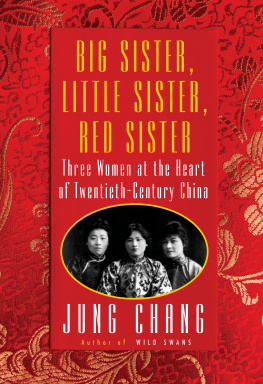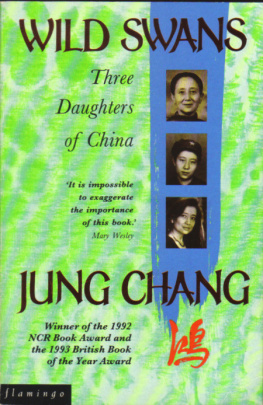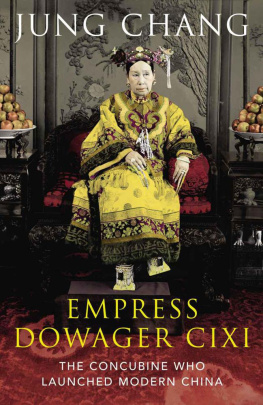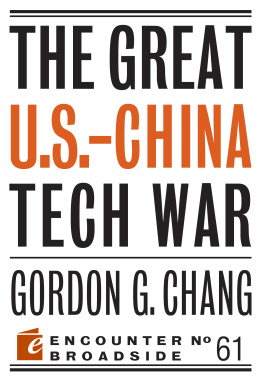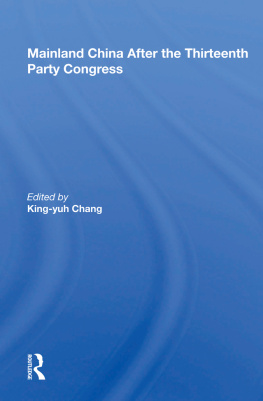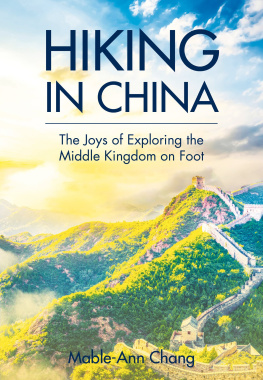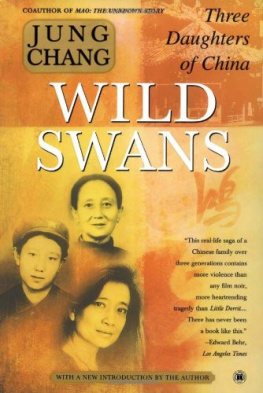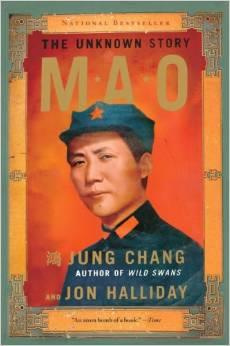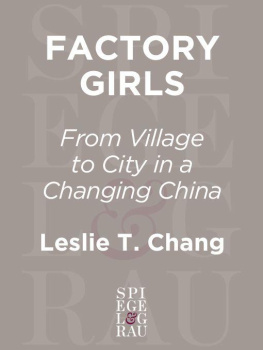Jung Chang - Three Women at the Heart of Twentieth-Century China
Here you can read online Jung Chang - Three Women at the Heart of Twentieth-Century China full text of the book (entire story) in english for free. Download pdf and epub, get meaning, cover and reviews about this ebook. year: 2019, publisher: Knopf Doubleday Publishing Group, genre: Non-fiction. Description of the work, (preface) as well as reviews are available. Best literature library LitArk.com created for fans of good reading and offers a wide selection of genres:
Romance novel
Science fiction
Adventure
Detective
Science
History
Home and family
Prose
Art
Politics
Computer
Non-fiction
Religion
Business
Children
Humor
Choose a favorite category and find really read worthwhile books. Enjoy immersion in the world of imagination, feel the emotions of the characters or learn something new for yourself, make an fascinating discovery.
- Book:Three Women at the Heart of Twentieth-Century China
- Author:
- Publisher:Knopf Doubleday Publishing Group
- Genre:
- Year:2019
- Rating:5 / 5
- Favourites:Add to favourites
- Your mark:
- 100
- 1
- 2
- 3
- 4
- 5
Three Women at the Heart of Twentieth-Century China: summary, description and annotation
We offer to read an annotation, description, summary or preface (depends on what the author of the book "Three Women at the Heart of Twentieth-Century China" wrote himself). If you haven't found the necessary information about the book — write in the comments, we will try to find it.
Three Women at the Heart of Twentieth-Century China — read online for free the complete book (whole text) full work
Below is the text of the book, divided by pages. System saving the place of the last page read, allows you to conveniently read the book "Three Women at the Heart of Twentieth-Century China" online for free, without having to search again every time where you left off. Put a bookmark, and you can go to the page where you finished reading at any time.
Font size:
Interval:
Bookmark:
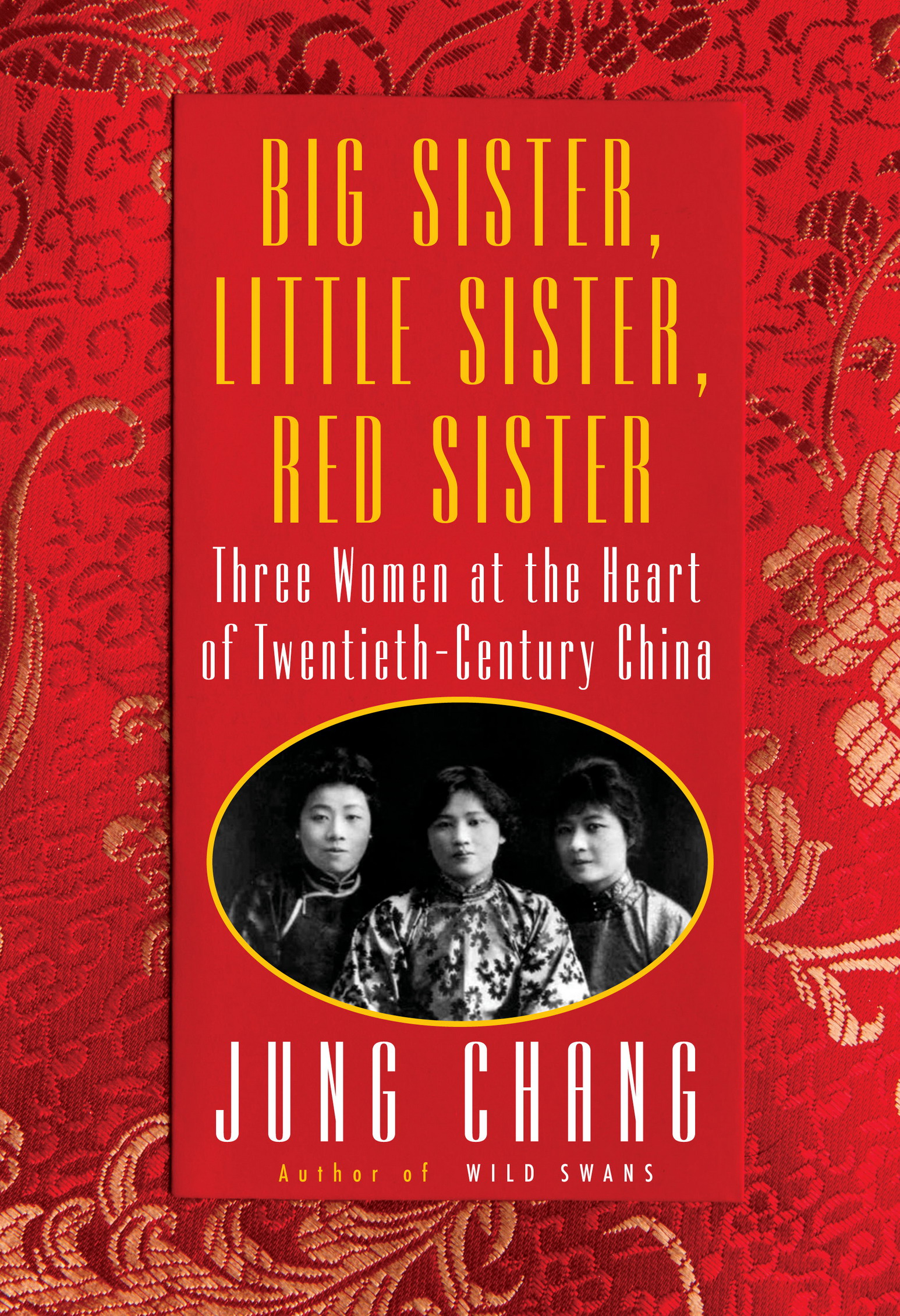
Empress Dowager Cixi: The Concubine Who Launched Modern China
Mao: The Unknown Story (with Jon Halliday)
Wild Swans: Three Daughters of China
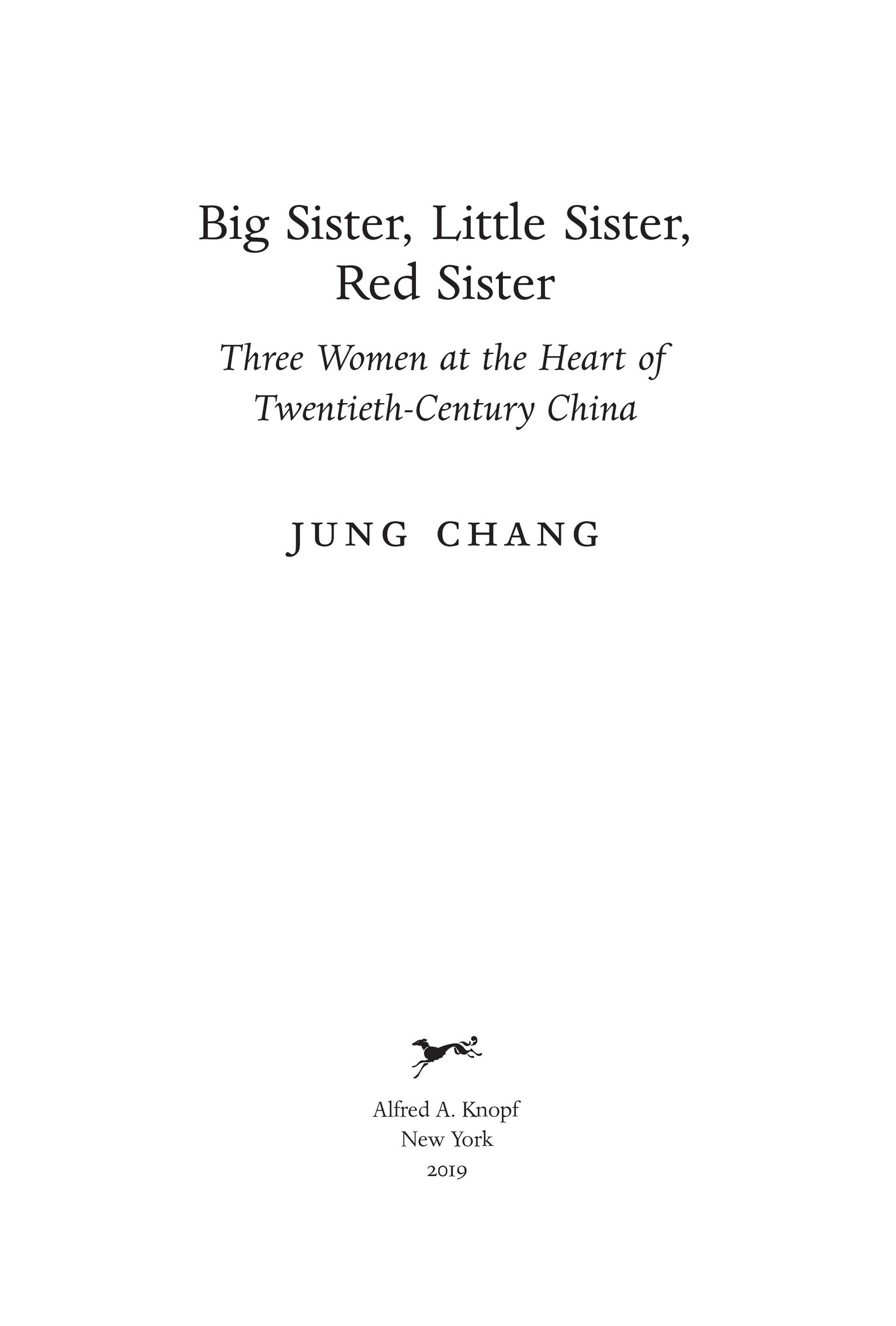
THIS IS A BORZOI BOOK PUBLISHED BY ALFRED A. KNOPF
Copyright 2019 by Globalflair Ltd.
All rights reserved. Published in the United States by Alfred A. Knopf, a division of Penguin Random House LLC, New York. Originally published in hardcover in Great Britain by Jonathan Cape, an imprint of Vintage, a division of Penguin Random House Ltd., London, in 2019.
www.aaknopf.com
Knopf, Borzoi Books, and the colophon are registered trademarks of Penguin Random House LLC.
Library of Congress Control Number: 2019943880
ISBN 9780451493507 (hardcover) ISBN 9780451493514 (ebook)
ISBN 9780525657828 (open market)
Ebook ISBN9780451493514
Cover images: (The Soong sisters) Historic Collection / Alamy; (fabric) Chakkrit Wannapong / Alamy
Cover design by Chip Kidd
v5.4
a
To my mother
The three Soong sisters, 1917 (Alamy)
Ei-ling, 1912 (Wesleyan College Archives)
Ching-ling, 1912 (Wesleyan College Archives)
May-ling, c. 1908 (Wesleyan College Archives)
Soong Charlie, early 1880s (Fifth Avenue United Methodist Church Archives, Wilmington, North Carolina)
Sun Yat-sens release from the Chinese Legation, London (Nationalist Party History Archive, Taipei)
Sun Yat-sen, Huang Xing and fellow republicans, 1912 (Alamy)
Sun with his family, 1912
Yuan Shi-kai, 1913 (Historical Photographs of China at the University of Bristol)
Chen Qi-mei (Alamy)
Song Jiao-ren (Alamy)
Mrs Soong Charlie with her two elder daughters (Alamy)
Members of the Soong Family at Ei-lings wedding (with permission of the owner of the photograph)
The Soong family in Shanghai, 1917 (Michael Feng)
Mikhail Borodin, Wang Jing-wei and others (Historical Photographs of China at University of Bristol)
The founding ceremony of the Whampoa military academy, 1924 (Michael Feng)
Ching-ling and her husband, 1924 (Academia Historica, Taipei)
Sun Yat-sens catafalque, 1929 (Alamy)
Ching-ling as a top-ranking leader of the Nationalist party, 1927 (Michael Feng)
Ching-ling, Ei-ling and May-ling, 1927 (Academia Historica, Taipei)
The wedding of May-ling and Chiang Kai-shek, 1927 (Academia Historica, Taipei)
May-ling and Chiang on their honeymoon (Academia Historica, Taipei)
Ei-ling and her husband, H.H. Kung (Wesleyan College Archives)
Ching-ling with Deng Yan-da (Alamy)
Chiang Kai-shek and May-ling sightseeing, 1936 (Academia Historica, Taipei)
The Chiangs flying home from Xian, 1936 (Alamy)
May-ling visiting wounded soldiers (Academia Historica, Taipei)
Ching-ling and May-ling being carried up the mountain to Chongqing, 1940 (Academia Historica, Taipei)
The sisters reunited in Chongqing, 1940 (Gregory Kung)
The sisters with Chiang Kai-shek, 1940 (Academia Historica, Taipei)
The sisters visiting a military hospital, 1940 (Academia Historica, Taipei)
The Chiangs with Captain Claire Chennault (Academia Historica, Taipei)
Joseph Stilwell and Ching-ling, c. 1940 (Alamy)
Wendell Wilkie, May-ling, H.H. Kung and Ching-ling, 1942 (Academia Historica, Taipei)
May-ling addressing Congress in America, 1943 (Academia Historica, Taipei)
May-ling at the Hollywood Bowl, 1943 (Alamy)
The Chiangs, Roosevelt and Churchill (Academia Historica, Taipei)
T.V. Soong, Roosevelt and Farley, 1942 (Michael Feng)
The Soong brothers, 1942 (with permission of the owner of the photograph)
The Chiangs eating under his portrait, 1940 (Gregory Kung)
Chiangs portrait on Tiananmen Gate (Academia Historica, Taipei)
May-ling returning to Chongqing from New York, 1945 (Academia Historica, Taipei)
The three sisters in Chongqing
Chiang Kai-sheks family, 1946 (Academia Historica, Taipei)
Chiang Kai-shek visiting his ancestral temple, 1949
Ei-ling at Chiangs birthday, 1956 (Academia Historica, Taipei)
Chiang meeting May-ling at Taipei airport, 1959 (Academia Historica, Taipei)
Red Sister visiting Moscow with Mao, 1957 (Alamy)
Ching-ling with Mao and Zhou En-lai on Tiananmen Gate, 1965 (Alamy)
Ching-ling at Maos memorial service in Tiananmen Square, 1976
Ching-ling and Yolanda (Hong Kong University of Science and Technology Library)
Ching-kuo with the body of his father, 1975 (Academia Historica, Taipei)
Ching-kuo and his wife, Faina Vakhreva (Academia Historica, Taipei)
Ei-ling (Gregory Kung)
Ching-ling (Gregory Kung)
May-ling (Gregory Kung)
Ching-ling in exile, 19278 (Alamy)
May-ling Palace, the necklace made from a mountain (Alamy)
May-ling in America, c. 1943 (Getty)
Ei-ling with Debra Paget, 1969 (Gregory Kung)
May-ling leaving Taiwan in 1991 (Academia Historica, Taipei)
May-ling, aged around 100 (Gregory Kung)
Postcard of Li Yuan-hong, Sun Yat-sen and Huang Xing (private collection)
Statue park, Taipei (Jung Chang)
While every effort has been made to trace copyright holders, if any have inadvertently been overlooked the publishers would be happy to acknowledge them in future editions.
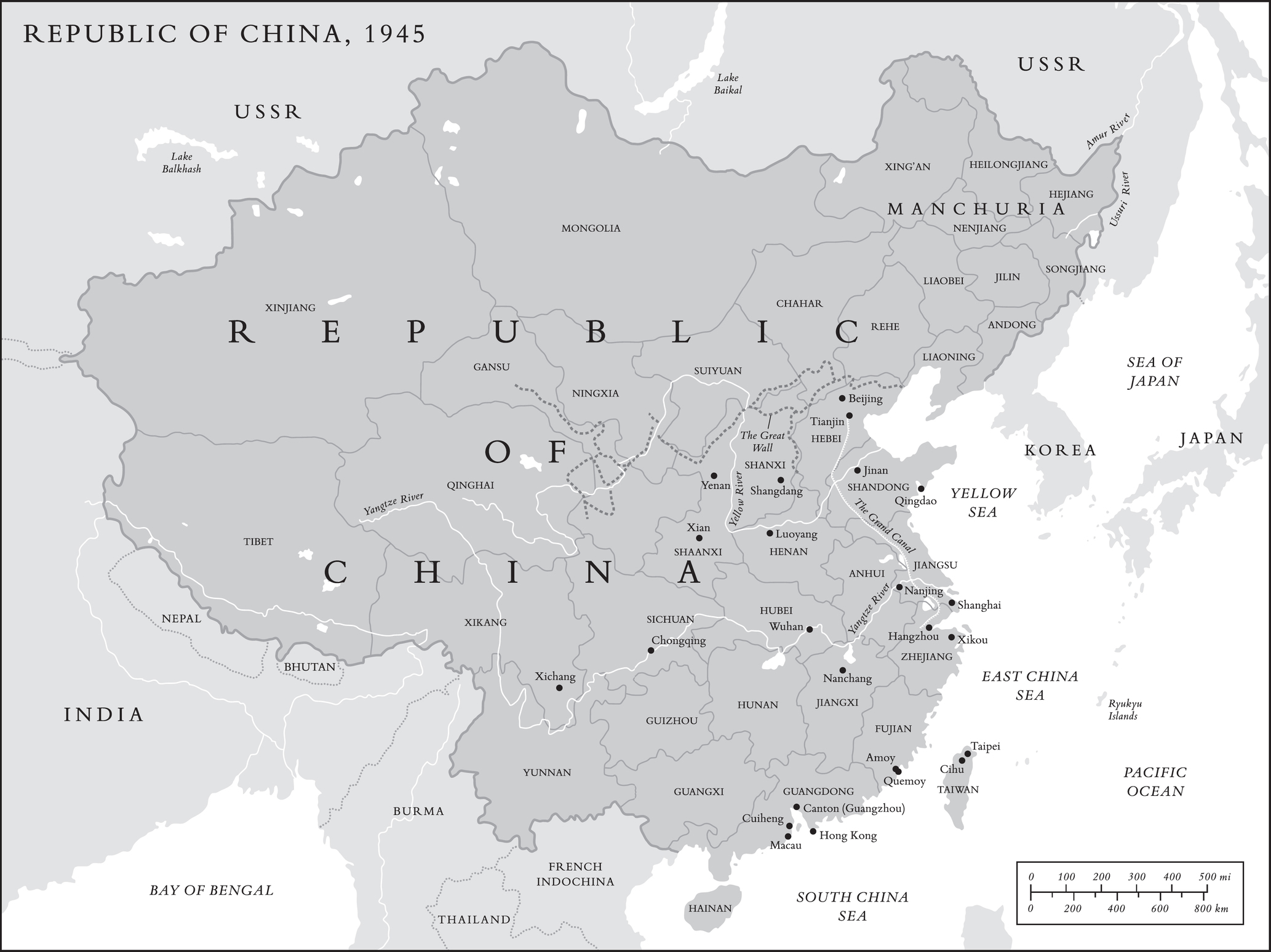
The best-known modern Chinese fairy tale is the story of three sisters from Shanghai, born in the last years of the nineteenth century. Their family, named Soong, was wealthy and prominent and among the citys elite. The Soong parents were devout Christians, the mother a member of Chinas most illustrious Christian clan (that of Xu, after whom a district of Shanghai is named), and the father the first Chinese to be converted in the American South by the Methodists, when he was in his teens. Their three daughters Ei-ling (Kind Age, born in 1889), Ching-ling (Glorious Age, born in 1893), and May-ling (Beautiful Age, born in 1898) were sent as children to America to be educated, something extremely rare at the time; and the girls returned home years later speaking better English than Chinese. Petite and square-jawed, they were not great beauties by traditional standards, their faces not shaped like melon seeds, eyes not resembling almonds and eyebrows no arching willow shoots. But they had very fine skin, delicate features and graceful bearing, enhanced by fashionable clothes. The sisters had seen the world; they were intelligent, independent-minded and self-confident. They had class.
What ultimately made them modern Chinas princesses, though, were their extraordinary marriages. One man who fell first for Ei-ling and then for Ching-ling was Sun Yat-sen, who pioneered the republican revolution that overthrew the monarchy in 1911. Known as the Father of (republican) China, Sun is revered throughout the Chinese-speaking world. Ching-ling married him.
Sun died in 1925; his successor, Chiang Kai-shek, courted and married May-ling, Little Sister. Chiang went on to form a Nationalist government in 1928, and ruled China until the Communists drove him to Taiwan in 1949. Little Sister was the first lady of the country for twenty-two years while he was in power. During the Second World War, as Chiang led the Chinese resistance against Japanese invasion, she became one of the most famous women of her time.
Font size:
Interval:
Bookmark:
Similar books «Three Women at the Heart of Twentieth-Century China»
Look at similar books to Three Women at the Heart of Twentieth-Century China. We have selected literature similar in name and meaning in the hope of providing readers with more options to find new, interesting, not yet read works.
Discussion, reviews of the book Three Women at the Heart of Twentieth-Century China and just readers' own opinions. Leave your comments, write what you think about the work, its meaning or the main characters. Specify what exactly you liked and what you didn't like, and why you think so.

